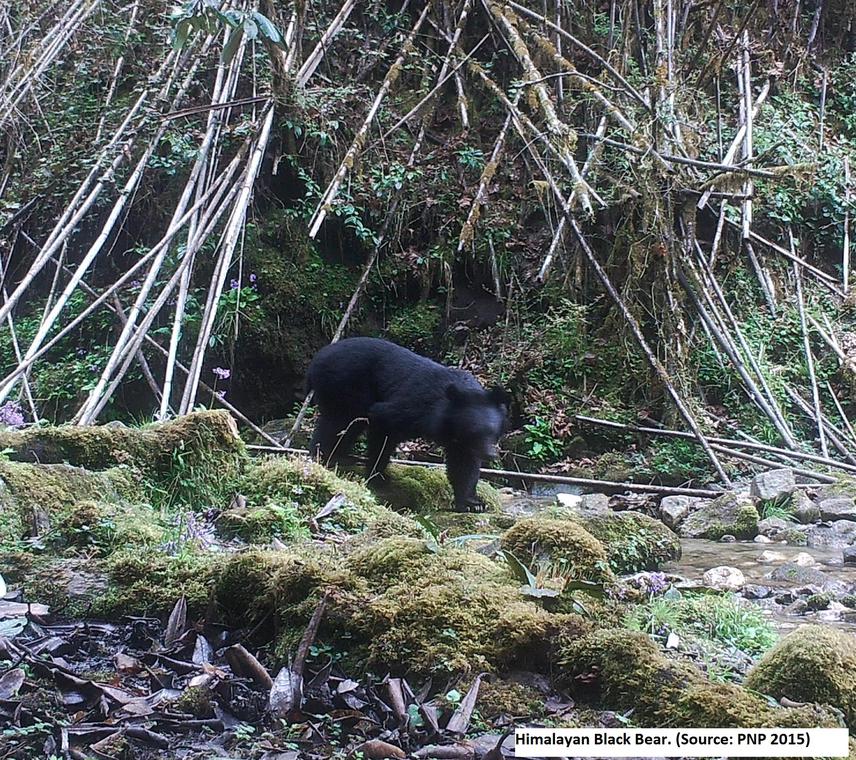Lha Tshering
Assess the population and distribution of bear and investigate the interaction and conflict of bear with the community in the Phrumshingla National Park in Bhutan.

The study on Human Bear conflict will be carried out in Phrumshingla National Park (PNP), (27°16’ 59” N and 90°58’ 40” E). The Park is with an area of 905 km² located in central Bhutan with its management headquarters situated in Ura, Bumthang. Its administrative jurisdiction covers four districts (Bumthang, Lhuentse, Monggar and Zhemgang) with eight blocks.
Himalayan Black Bear (Ursus thibetanus) is categorized as threatened to endangered species as per the International Union for Conservation of Nature red list. It is also listed under schedule I in the Forest and Nature Conservation Act of Bhutan.
Four blocks (Ura, Tsamang, Jarey and Maedtsho) with the highest human population inside PNP will be systematically laid out on 4x4 km of square grid and all the grids systematically surveyed mainly for bear presence-absence, record human-bear conflict and interview 50% of the total population by semi-structured questionnaire. The field data will be analysed using SPSS. Bear population map will be produced using Arc GIS 10.2.2.
Awareness campaigns will be conducted with the help of PNP official in the identified bear conflict zones mainly to explain about the bear behaviour, food and feeding ecology of the bears, preventive measures and first aid for bear attack to the local communities. Furthermore, the local communities will be sensitized on the laws and conservations policies with regard to human-wildlife conflicts. Banners and posters on human-bear conflict management measures will be used to sensitize the local communities
Unlike other wild animals, the Himalayan Black Bear is found only in few pockets of Bhutan. This is largely attributed to its limited habitat, which is increasing been threatened due to increased socio-economic development taking place in the country. This in turn leads to increased human-bear conflicts in the country. However, there is no strategy put in place to address this problem in the country. This is probably due to lack of proper understanding about the root causes of human-bear conflict in the country. Therefore, to better understand and draw up a sound strategy to address the human-bear conflicts in the country, this study is aimed to assess the population and distribution of bear and investigate the interaction and conflict of bear with the community in the Phrumshingla National Park in Bhutan.